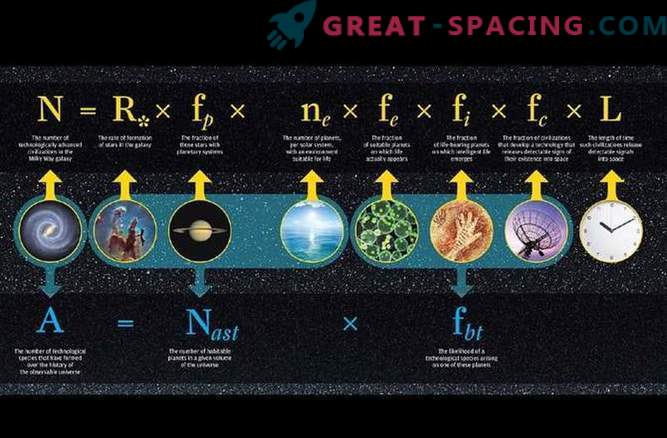
Is there life in the universe? If so, can she communicate and does she want to talk to us? If there is such a civilization, how long can it survive? These are some of the main issues that are regularly reviewed by astronomers who think about aliens.
Suffice it to say that the answers are not as simple as Star Trek or Star Wars make you believe. The most famous answer came in 1961, when the astronomer Frank Drake proposed what is now known as the Drake equation. You can read it on the website of the Search for Extraterrestrial Intelligence (SETI) in full, and understand that it describes the variables necessary for a technological civilization that could communicate with us.
A new document in astrobiology suggests that there may be a way to simplify the equation, based on observations of exoplanets, which we did with the first one discovered in the 1990s. While the result is depressing — life was abundant, but now it’s likely to be dying out — there is an app that can help us expand our own civilization, the researchers say. The study was led by Adam Frank, a professor of physics and an astronomer from the University of Rochester.
“The question of whether developed civilizations exist elsewhere in the universe has always hit three large uncertainties in the Drake equation,” Frank said in a statement.

Two equations describing the possibilities of life: the famous Drake equation (above) and the newer equation of Adam Frank and Woodruff Sullivan. “We have known for a long time how most of the stars exist,” added Frank. “We don’t know how many of these stars were planets that could potentially cover life, how often life could evolve and lead to intelligent beings, and how long any civilization could exist before becoming extinct.”
Here are the elements that Frank and co-author Woodruff Sullivan (department of astronomy and astrobiology programs at the University of Washington) suggest for change:
- How many stars have habitable planets? 1/5 stars have planets in habitable zones. This is known because of the search for exoplanets by the Kepler space telescope, as well as other planetary research.
- How long can civilizations survive? This question is very difficult to answer, so the researchers instead asked: “Are we the only technological species that have ever appeared?”.
- How likely is it that an advanced life will arise on the planet? Researchers instead tried to imagine the Universe, where humanity is the only one. By applying this question of probability to the number of known stars, the researchers found a probability of one in 10 billion trillions.

Comparative dimensions of the Earth-like planets. Four planets on the left were discovered by the Kepler space telescope, while the extreme right planet is our Earth. From left to right: Kepler-22b, Kepler-69c, Kepler-62e, 62f-Kepler and Earth.
The authors duplicate the “archaeological form” of the Drake equation. Their equation multiplies the terms “Nast” and “fbt” to get the result. “Nast” refers to “the number of habitable planets in a given volume of the Universe”, and “fbt” is “the probability of the technological type arising on one of these planets”. Researchers say that one in 10 billion trillions seems like a very low probability that humanity is lonely there. But the vast distances of the universe, combined with the uncertainty of how long civilizations exist, means that they can never be provided with the opportunity to communicate with someone there.
Our civilization is 10,000 years old; if a typical civilization does not last much longer (within 13 billion years of the life of the Universe), then the rest will most likely become extinct. But there is a practical application to support our term, the researchers say.
“Our results suggest that our evolution was not unique and, probably, this happened before many times before,” said Frank. “The remaining cases can include many energy-intensive civilizations regarding their feedback on their planets and how their civilizations grow. This means that we can start exploring this problem with the help of modeling to get an idea of what leads to long-lived civilizations and what doesn't. ”











































